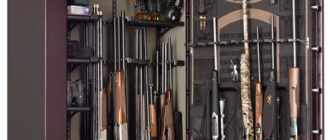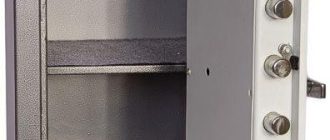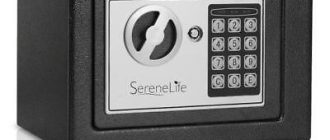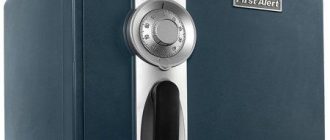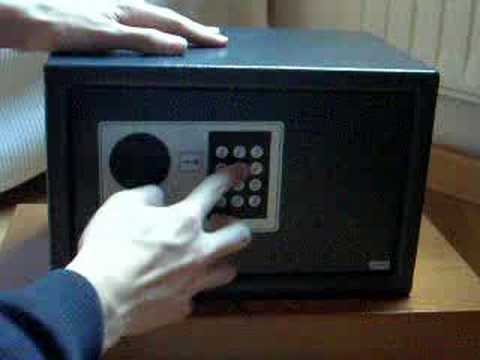
What to do if you can’t open your safe
If you find yourself in a situation where you can’t open your safe, it can be quite frustrating and even stressful. Whether you’ve lost your keys, forgotten the combination, or the mechanism is simply not functioning properly, dealing with a locked safe can be a challenging task. However, there are several expert tips and solutions that can help you overcome this problem and regain access to your valuables.
First and foremost, it’s important to carefully read the instructions that came with your safe. These instructions often include important information about troubleshooting common issues and provide step-by-step guidance on how to open the safe in case of emergencies. Make sure to follow these instructions precisely, as they have been designed to help you overcome any security hurdles and access your belongings.
If the instructions don’t provide a solution or if you don’t have access to them, it may be necessary to seek professional help. Locksmiths and safe technicians have the knowledge and experience to deal with a wide range of safe-related problems. They have specialized tools and techniques that can safely and efficiently open your locked safe without causing any damage. Contacting a professional locksmith or safe technician is often the best choice when it comes to resolving complex safe lockouts.
Another option you can consider is reaching out to the manufacturer of the safe. Most reputable safe manufacturers provide customer support services that can assist you in troubleshooting and resolving issues with your safe. They may be able to provide you with a unique override code or guide you through a process to reset the combination. It’s worth checking the manufacturer’s website or contacting their customer support team to explore these options.
In conclusion, dealing with a locked safe can be a challenging and stressful situation. However, by carefully reading the instructions, seeking professional help, or contacting the manufacturer, you can increase your chances of successfully opening your safe and regaining access to your valuable belongings.
Understanding the Problem
When you find yourself unable to open your safe, it can be a frustrating and stressful situation. Understanding the problem is the first step in finding a solution. There are several reasons why you may be experiencing difficulty accessing your safe.
The most common issue is a problem with the mechanism of the safe. This could be due to a mechanical failure or damage to the lock or latch. In such cases, it is important to call a professional locksmith or safe technician to assess and fix the problem.
Another common reason for being unable to open a safe is a forgotten combination. Many safes require a specific combination of numbers or a pattern to be entered in order to unlock the door. If you have forgotten this combination, you may need to refer to the safe’s manual or contact the manufacturer for assistance.
If your safe uses keys instead of a combination, the problem could be as simple as misplacing the keys or locking them inside the safe. In this case, you may need to consider contacting a locksmith to help you retrieve the keys or create a new set.
It is also possible for the lock or security mechanism to become jammed, preventing the safe from opening. This can happen due to various reasons, such as debris or foreign objects getting lodged in the lock. A qualified locksmith can help you identify and resolve the cause of the jam.
Overall, understanding the problem behind your inability to open your safe is crucial in determining the appropriate solution. Whether it’s a mechanical issue, a forgotten combination, misplaced keys, or a jammed lock, seeking professional assistance is often the best course of action to ensure a safe and effective resolution.
Checking the Key and Lock Mechanism
If you find that your safe is not opening even though you have the correct combination or key, it is important to first check the key and lock mechanism. This can help determine if there is a problem with the keys or lock itself.
Follow these instructions to check the key and lock mechanism:
| 1 | Inspect the key for any signs of damage or wear. Make sure it is not bent or broken. |
| 2 | Try using some lubricant, like WD-40, on the key and insert it into the lock. This can help loosen any stuck or jammed parts. |
| 3 | Gently jiggle the key back and forth while applying slight pressure to see if the lock mechanism will release. Sometimes it can get stuck due to dirt or debris. |
| 4 | If you have a combination lock, double-check that you haven’t forgotten the correct combination. Follow the manufacturer’s instructions on resetting the combination if needed. |
| 5 | If you have spare keys, try using them to see if the issue is with the key itself. |
If none of these steps fix the problem, it is recommended to contact a professional locksmith or the manufacturer for further assistance. They will have the necessary expertise and tools to help you open your locked safe and resolve any security issues.
Troubleshooting Electronic Keypad
If you have forgotten the combination to your electronic keypad lock, you may be feeling locked out of your safe and concerned about the security of your valuables. Fortunately, there are steps you can take to troubleshoot and try to regain access to your safe.
- Double-check the combination: Ensure that you have entered the correct combination. It’s easy to make mistakes, especially if you are feeling anxious or in a hurry. Take a moment to calm down and carefully enter the combination again.
- Reset the lock: If you still can’t open the safe, try resetting the lock. Consult the manufacturer’s instructions for the specific steps to reset your electronic keypad lock model. This may involve entering a default code or performing a specific sequence of actions.
- Check for any obstructions: If the lock appears to be jammed or there is resistance when entering the combination, carefully inspect the keypad and locking mechanisms for any obstructions or debris. Clean them if necessary and try again.
- Replace the batteries: Electronic keypad locks rely on batteries for power. If the keypad is not lighting up or displaying any response, it could be a sign of low battery power. Replace the batteries with new ones and see if that resolves the issue.
- Contact the manufacturer or a locksmith: If none of the troubleshooting steps above work, it may be necessary to contact the manufacturer or seek assistance from a professional locksmith experienced with electronic keypad locks. They can provide guidance or perform the necessary repairs to regain access to your safe.
Remember, it’s always important to follow the instructions provided by the manufacturer to ensure safe and proper usage of your electronic keypad lock. Regularly updating your combination and keeping the keypad clean can help prevent future issues.
Resetting the Combination
If you find yourself in a situation where you can’t open your safe due to a jam or a locked mechanism, it may be necessary to reset the combination. Resetting the combination will help you regain access to your safe and ensure that your belongings remain secure.
Before attempting to reset the combination, it is important to ensure that you have the necessary information and tools. Check the user manual or the manufacturer’s website for instructions specific to your safe model. This may include any special keys or tools required for the resetting process.
Once you have the required instructions and tools, follow these steps to reset the combination:
- Ensure the safe is in the unlocked position and open the door.
- Locate the combination dial or keypad on the safe’s door.
- Enter the current combination, if prompted.
- Follow the instructions provided to reset the combination. This may involve turning the dial in a specific sequence or entering a series of numbers on the keypad.
- After resetting the combination, test the new combination to ensure it works properly.
It is important to choose a new combination that is easy for you to remember but difficult for others to guess. Avoid using easily guessable combinations, such as birth dates, phone numbers, or sequential numbers. Opt for a combination that incorporates a mix of numbers and letters, and consider changing it on a regular basis for added security.
In the event that you are unable to reset the combination on your own, it is recommended to contact a professional locksmith or the manufacturer’s customer support for assistance. They will have the expertise and tools necessary to help you regain access to your safe without causing any damage.
Remember to always refer to the manufacturer’s instructions for your specific safe model, as the resetting process may vary. Maintaining a copy of the instructions in a safe and easily accessible location can help you in case you forget the combination or encounter any issues with your safe in the future.
Lubricating the Lock
If you find yourself unable to open your safe due to a stiff or sticky lock mechanism, lubrication may be the solution you need. Over time, dust, dirt, and grime can accumulate in the lock, making it difficult to turn the combination or insert the key.
Before applying any lubricant, it is important to refer to the manufacturer’s instructions for your specific safe model. Some safes may have specific guidelines or restrictions on the type of lubricant to use.
When choosing a lubricant, opt for products specifically designed for locks. Graphite-based lubricants or Teflon sprays are commonly recommended for safe locks as they do not attract dust or debris, ensuring a longer-lasting solution. Avoid using oil-based lubricants as they can attract more dirt and potentially cause damage to the lock mechanism.
To lubricate the lock, start by inserting the key or dialing the combination to the locked position. This will allow you to access the lock mechanism. Apply a small amount of lubricant directly into the keyhole or on the dial, ensuring it reaches the inner workings of the lock. Use a thin applicator, such as a needle or a straw, to reach tight spaces.
After applying the lubricant, work the key or dial back and forth several times to distribute the lubricant throughout the lock mechanism. This will help loosen any stuck components and allow for smoother operation. Be patient and give the lubricant some time to work its way into the lock.
If the lock remains stuck after lubricating, it may be necessary to consult a professional locksmith who is experienced in safe opening and repairs. They will have the necessary tools and expertise to diagnose and resolve the issue without compromising the security of your safe.
Remember, regular maintenance and cleaning of your safe can help prevent lock problems in the future. Following the manufacturer’s instructions and keeping the lock mechanism free from dirt and debris will ensure optimal security and functionality for years to come.
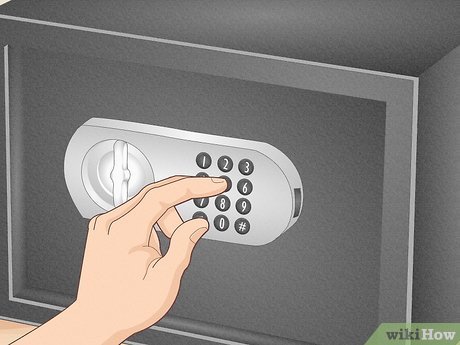
Trying Different Safe Opening Techniques
If you find yourself unable to open your safe using the keys or the regular mechanism, there are other techniques you can try before seeking professional help.
First, double-check to ensure the safe is truly locked and that you haven’t forgotten to follow the unlocking instructions correctly. Sometimes, a simple oversight can cause a lot of frustration.
If you are confident that you have followed the instructions correctly and the safe is still not opening, you can try different techniques to open it.
One technique is to try different combinations based on relevant information, such as dates, numbers with personal significance, or previous combinations you have used in the past. Be sure to try different variations and combinations to increase your chances of success.
Another technique is to apply gentle pressure to the safe’s door while attempting to turn the handle or use the key. Sometimes, safes can become slightly misaligned, and putting pressure in the right places can help correct the issue and allow the safe to open.
If all else fails, it is important to remember that tampering with the security mechanisms of a safe can cause irreversible damage and may void any warranties or insurance coverage. In such cases, it is best to contact a professional locksmith or the manufacturer to assist you in opening the safe without causing any harm.
Contacting the Manufacturer
If you have forgotten the combination to your safe or if the mechanism is locked or jammed, contacting the manufacturer is often the best solution. They will have the expertise and knowledge to assist you in resolving the issue with your safe.
When reaching out to the manufacturer, be prepared to provide them with all relevant information, such as the model and serial number of the safe. This will help them identify your specific safe and provide accurate instructions or solutions.
It is important to follow the manufacturer’s instructions carefully when contacting them. They may ask you to submit a request through their website or to call their customer service hotline. Make sure to have all necessary documentation and proof of purchase ready, as they may require this information.
Additionally, the manufacturer may also be able to provide you with replacement keys or alternative methods for accessing your safe, depending on the situation. They will guide you through any additional steps that need to be taken in order to safely open your locked safe or resolve any mechanical issues.
Remember, contacting the manufacturer is often the most reliable and efficient way to address any problems with your safe. They have the expertise and resources to guide you through the necessary steps and ensure the safety and security of your belongings.
Seeking Professional Help
If you have forgotten the combination to your safe or if the locking mechanism is not functioning properly, it may be necessary to seek professional help. A locksmith or a safe technician has the necessary expertise and tools to handle such situations.
Attempting to force open a locked safe can result in damage to both the safe and its contents. Therefore, it is advisable to leave the task to professionals who can ensure the security of your safe and its contents.
When contacting a professional, provide them with all the relevant information about your safe, including the make and model, any noticeable issues or symptoms, and any attempts you have made to unlock it. This information will help them assess the situation and come prepared with the right tools and knowledge.
It is also recommended to follow any specific instructions provided by the safe manufacturer or outlined in the safe’s user manual. These instructions may include troubleshooting steps or emergency procedures to resolve common issues or jams.
Remember, seeking professional help is the safest and most reliable option when you are unable to open your safe on your own. It ensures that the integrity of the safe is maintained and that any potential security risks are minimized.
Reviewing Safe Maintenance Practices
Maintaining the security and functionality of your safe is crucial to ensure that you can access your belongings when needed. By following proper maintenance practices, you can avoid situations where the safe becomes jammed or you forget the combination to open it. Here are some expert tips:
- Regularly check the condition of the keys and make sure they are not damaged. Replace any worn-out keys promptly to prevent future issues with opening the safe.
- Read and follow the manufacturer’s instructions on safe operation and maintenance. This will help you understand the correct way to use and care for your safe.
- To avoid forgetting the combination, create a system for securely storing and accessing this information. Consider using a password manager or a physical safe to store important codes or combinations.
- Periodically clean the locking mechanism to remove any debris or dirt that may interfere with its proper functioning. Use a soft brush or compressed air to clean the inside of the safe as well.
- Keep the safe in a dry and cool environment to prevent rust or corrosion. Moisture can damage the internal components of the safe and affect its performance.
- If you encounter any issues with the safe, such as a jammed lock or difficulties in opening it, contact a professional safe technician for assistance. Attempting to force open the safe yourself can cause irreversible damage.
By following these safe maintenance practices, you can ensure that your safe remains functional and accessible for years to come.
Exploring Alternative Access Methods
When faced with a security safe that you can’t open, there are alternative access methods that you can try before resorting to drastic measures like drilling or calling a locksmith.
If your safe is jammed, you can try using lubricants like WD-40 to loosen the mechanism and make it easier to open. Be sure to follow the manufacturer’s instructions and use the lubricant sparingly.
If you have access to a spare set of keys, try using them to open the safe. Sometimes, the main set of keys might be damaged or worn out, preventing them from turning the lock.
In case you have forgotten the combination, there are steps you can take to retrieve it. Follow the instructions provided by the safe’s manufacturer to reset the combination or contact their customer support for assistance.
If all else fails and the safe remains locked, it may be necessary to call a professional locksmith who specializes in safes. They have the tools and expertise to safely open the locked safe without causing any damage.
Exploring these alternative access methods can help you regain access to your locked safe without resorting to extreme measures. Remember to prioritize your safety and the security of your belongings when attempting to open a locked safe.
Safely Disassembling the Safe
If you find yourself locked out of your safe and you have forgotten the combination or your keys are jammed, you may need to disassemble the safe to regain access. However, it is important to approach this task with caution and prioritize your security.
Before attempting to disassemble the safe, ensure that you have exhausted all other possible solutions. Consider reaching out to a professional locksmith or the safe manufacturer for assistance.
If you decide to proceed with disassembling the safe, follow these expert tips to ensure a safe and successful process:
1. Prepare a Safe Workspace: Choose a clean and well-lit area to work. Clear away any clutter to minimize the risk of damage or injury.
2. Gather the Necessary Tools: Before starting, gather the tools you will need, such as screwdrivers, pliers, and a flashlight. Having all the necessary tools on hand will make the process smoother.
3. Document the Disassembly: It is important to document each step of the disassembly process. Take clear photographs or make notes as you go along. This will help you reassemble the safe correctly afterward.
4. Begin with the Outer Layers: Start by removing any outer layers, such as the outer panels or cover. Use caution when working with sharp edges or heavy components.
5. Proceed with Internal Components: Once the outer layers are removed, carefully examine the internal components of the safe. Look for any screws, bolts, or fasteners that need to be removed to access the locking mechanism.
6. Handle with Care: As you disassemble the safe, handle each component with care to avoid causing further damage. Take your time and be patient throughout the process.
7. Safely Store the Components: As you remove components, organize and store them in a safe place. Use containers or bags to keep smaller pieces together, and label them for easy reassembling later.
8. Reassemble with Professional Assistance: If you are unable to access the safe or encounter difficulties during the disassembly process, it is recommended to seek professional assistance. A qualified locksmith or safe technician can help you reassemble the safe safely and correctly.
Remember, disassembling a safe is a sensitive task, and it should only be attempted if absolutely necessary. Prioritize your security, and consult professionals when needed.
Recovering the Contents of the Safe
If you find yourself unable to open your safe due to a locked combination or a forgotten code, don’t panic. There are various solutions and instructions you can follow to regain access to the contents of your safe:
- Double-check the combination: Make sure you are entering the correct combination. Sometimes, a simple mistake can prevent the safe from opening. Take your time and carefully input the numbers.
- Try different variations: If you are unsure about a particular number in the combination, try going through all possible variations of that number. You might discover the correct combination by trial and error.
- Reset the code: Some safes have a reset button or a specific procedure to reset the code. Refer to the safe’s manual or contact the manufacturer for instructions on how to reset the code.
- Call a locksmith: If all else fails, it may be necessary to seek professional help. A locksmith with experience in safe opening can help you regain access to your belongings without causing damage to the safe.
- Check for any mechanical issues: If your safe isn’t opening due to a jammed mechanism or other mechanical issues, do not attempt to force it open yourself. Contact a professional locksmith or the safe manufacturer for assistance.
- Provide proof of ownership: In some cases, if you cannot open your safe and need professional assistance, you may be required to provide proof of ownership to ensure the security of the contents inside.
Remember, it’s important to maintain the security of your safe while attempting to recover the contents. Follow the instructions carefully and, if necessary, seek professional help to avoid any further complications.
Preventing Future Issues
To prevent future issues with your safe, it’s important to follow these instructions:
- Keep your combination secure: Make sure to store your combination in a safe and confidential place. Avoid sharing it with anyone to prevent unauthorized access to your safe.
- Maintain the locking mechanism: Regularly clean and lubricate the locking mechanism to ensure smooth operation. This will help prevent the mechanism from getting jammed or stuck.
- Store spare keys safely: If your safe requires keys, make sure to keep them in a secure location, away from the safe itself. Losing the keys can lead to difficulties in opening the safe.
- Stay aware of any signs of trouble: Pay attention to any indications that your safe might be experiencing issues, such as difficulty turning the dial or unusual sounds. Address these problems promptly to avoid getting locked out of your safe.
- Consider professional maintenance: If you rely on your safe for important documents or valuable items, it may be worth having a professional locksmith service inspect and maintain it regularly. They can identify any potential issues before they become more significant problems.
By following these preventative measures, you can minimize the chances of encountering future difficulties in opening your safe.
Q&A:
Why can’t I open my safe even though I’m entering the correct combination?
If you are unable to open your safe even though you are entering the correct combination, there could be a few possible reasons. First, check if the safe is properly aligned and there is no interference preventing it from unlocking. Also, check if the batteries in the safe’s electronic keypad are still working. If none of these solutions work, it is best to contact a professional locksmith to help you open the safe.
What should I do if I forgot the combination to my safe?
If you forgot the combination to your safe, there are a few steps you can take to try and regain access. First, check if there is a backup key that came with the safe. If so, you can use that to open the safe. If not, you can try contacting the manufacturer of the safe and providing them with proof of ownership to see if they can assist you in recovering the combination. If these options don’t work, you may need to hire a professional locksmith to open the safe for you.
Can I try to force open my safe if I can’t open it?
It is not recommended to try and force open your safe if you are unable to open it. This can potentially cause damage to the safe and make it even more difficult to open. Instead, it is best to reach out to a professional locksmith who has the expertise and tools to safely open the safe without causing any further damage.
How much does it cost to hire a locksmith to open a safe?
The cost to hire a locksmith to open a safe can vary depending on several factors, such as the type of safe, its size, and the complexity of the lock mechanism. On average, the cost can range from $150 to $500 or more. It is best to contact a few local locksmiths and get quotes to have a better idea of the potential cost.
Is there anything I can do to prevent being locked out of my safe in the future?
There are a few precautions you can take to prevent being locked out of your safe in the future. First, make sure to regularly change the batteries in the safe’s electronic keypad to ensure it functions properly. Additionally, keep a backup key in a secure location outside of the safe, so that you have access to it if needed. It is also advisable to have the combination written down and kept in a secure place, such as a safety deposit box or a password manager.


